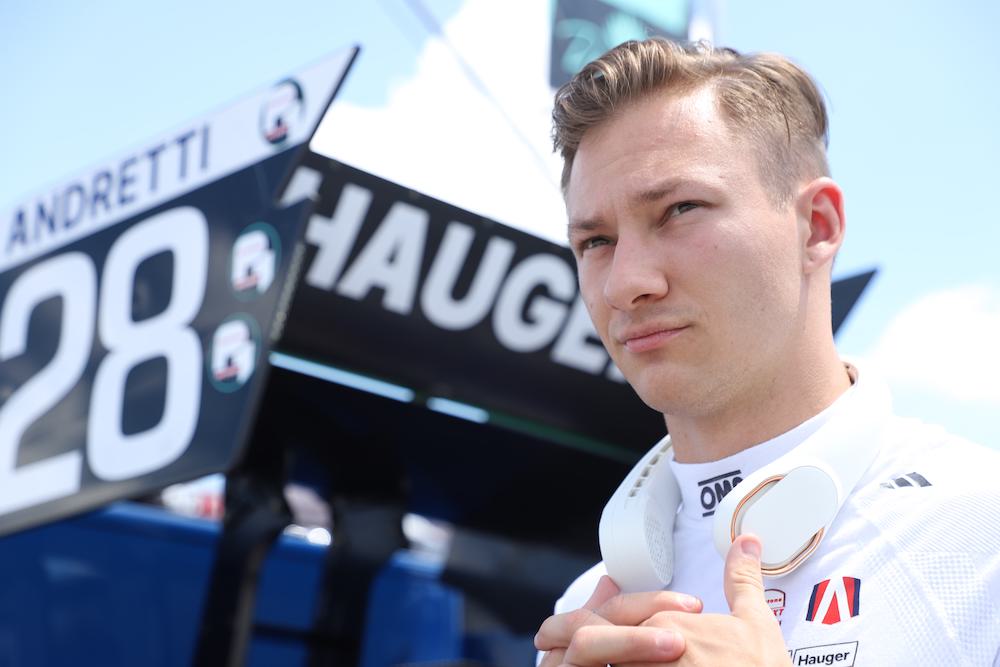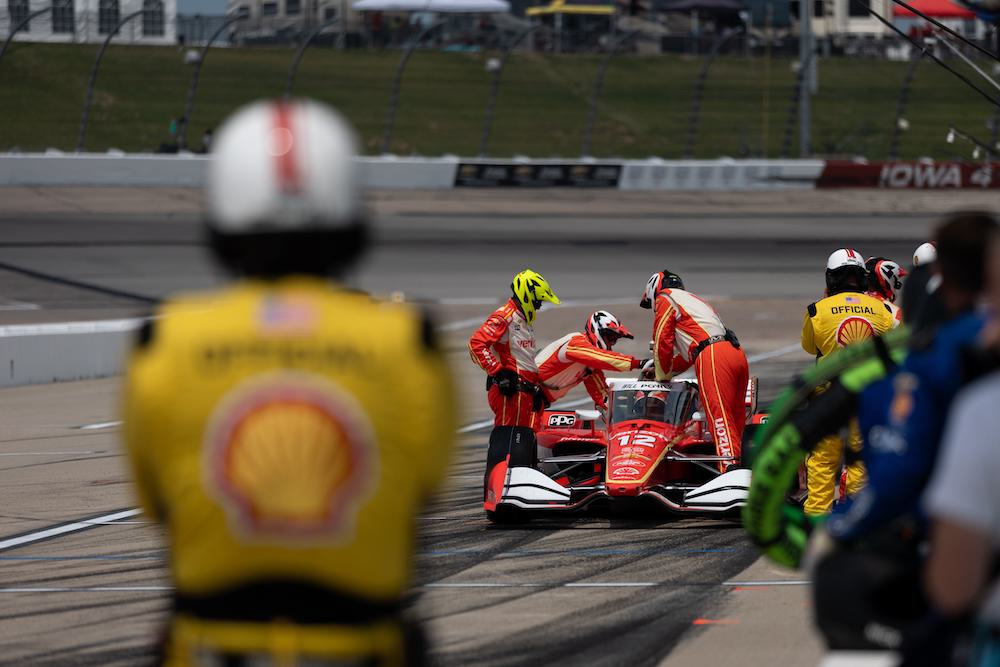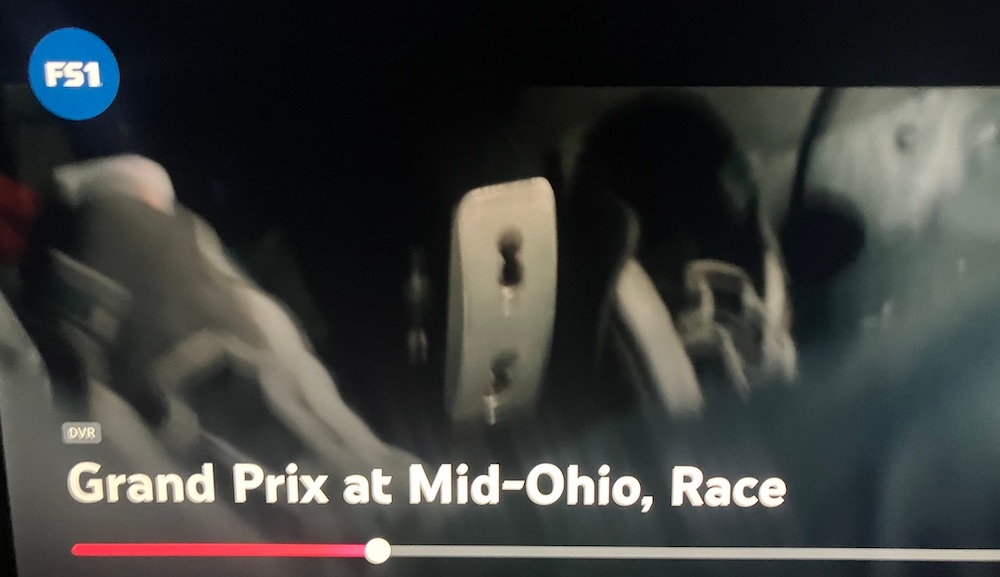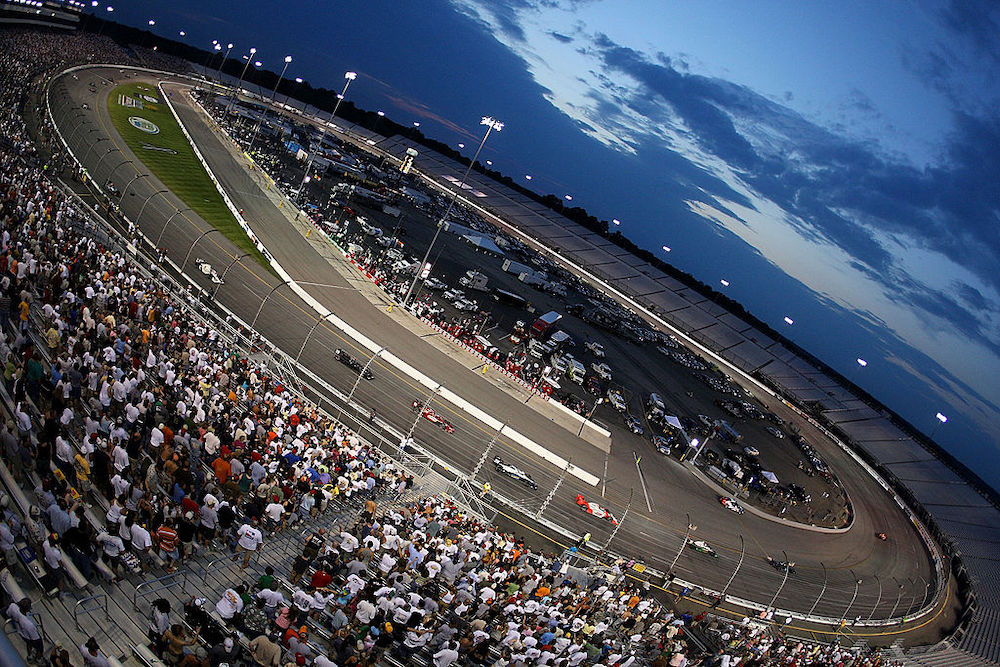Welcome to the RACER Mailbag. Questions for any of RACER’s writers can be sent to mailbag@racer.com. We love hearing your comments and opinions, but letters that include a question are more likely to be published. Questions received after 3pm ET each Monday will be saved for the following week.
Q: The racing at Iowa was better than expected, and crowds were far worse. Can we go back next year for a Wednesday/Thursday night double-header that follows the MLB All-Star game and is held under the lights with a network audience?
Dan, Brownsburg, INtwo
MARSHALL PRUETT: Field of IndyCar Dreams. I’m all-in on this. And let’s just do a single day, single race and make it special. If that doesn’t work, nothing will.
Q: Are engine replacements reported somewhere fans can see? Would be interesting to see when teams chose or had to replace an engine.
Do you know if Will Power had to get a new engine for Iowa? I watched Chevy guys really looking at his engine in the garage after he was out of the Mid-Ohio race.
Craig
MP: Chevy and Honda supply IndyCar with lists of available engines as they’re built/rebuilt and ready to be used, and IndyCar picks them at random and tells Chevy/Honda to send that motor to the team in need. IndyCar then does a serial number confirmation to ensure what’s in the car matches what they said to put in the car.
Power got a fresh engine for Iowa, yes.
Q: I believe Scott McLaughlin has what it takes to be an IndyCar series champion. Should it happen, it’d make him the champion of two different top tier series. How many people – and who – have been able to pull that off?
Shawn, MD
MP: Strange to see so many unforced errors in his fifth season. He was my pre-season pick for the title. Of those who come immediately to mind in recent times, Simon Pagenaud won the 2010 ALMS Prototype championship and the 2016 IndyCar title. Juan Pablo Montoya won the 1999 CART IndyCar championship and the 2019 IMSA DPi championship as well. I’m sure there are others.
Q: Just heard towards the end of Saturday’s Iowa race that Chevy messaged all Chevy teams telling them to not use the attack mode setting anymore. I assume Chevy will have nothing to say about this. Do you think they saw some data that made them worry about the engine giving out?
Craig
MP: Correct on Chevy having a consistent policy on not talking about such things. Without knowing what was or wasn’t messaged, yes, if a manufacturer asks teams to not do something, there’s usually a reason for it.
Q: I just watched Iowa Race 1. A few interesting storylines (Penske’s resurgence, O’Ward’s first win of 2025, Chevy running up front), but the empty grandstands are a total embarrassment.
The threatening weather was certainly a factor, but how did they go from sellout crowds to this debacle so quickly? Was Hy-Vee giving away tickets a few years back? Did the ridiculous ticket prices with the concerts drive people away for good? Has the single-lane racing caused mass disinterest? I assume some combination of those, but this is unacceptable humiliation.
There must be a solution for this great facility and terrific fans there. Maybe one race, and on Saturday or Sunday night (not late afternoon)? There are races at Knoxville this weekend, that will likely have better attendance. Maybe Penske Entertainment could benefit from a title sponsor that can market the open-wheel weekend at both tracks? Obviously, they’ll go with whoever offers money to sponsor the race, but IndyCar obviously failed badly as a promoter here. Something worked well in the recent past.
Tom Pate, Macomb, MI
MP: Ever seen where a popular band loses its recording deal with a major label and returns on a smaller one — or they start their own label — and they shed all of the general interest fans and are left with just the diehards? That’s what everyone just saw at Iowa Speedway after Hy-Vee left as co-promoter, sponsor, marketing force, and bringer of big musical acts.
With Penske Entertainment as the sole promoter, and minus the vast reach and resources Hy-Vee was willing to commit, there was always going to be a decline in attendance. Then factor in the brutally bad racing last year when attendance was slightly down — even with the giant country acts and whatever crossover category that befits Post Malone — on not one, but two 275-lap occasions, and you have the recipe that creates a lot of empty stands last weekend.
Saturday’s race wasn’t a sustained thriller, but it got better as it went on and the second lane was revealed to a number of drivers as something that could be used to pass. Sunday was better — not like the crazy-great Iowas of the past — and showed some life for most of the contest.
If Sunday’s Iowa race could be slightly improved upon, it’s well worth going back, but the sparse crowd is what nothing but diehards look like. I don’t know if one driver leading 242 laps on Saturday with Newgarden and Palou leading 194 of 275 on Sunday would jump out as amazing to casual fans and get them to return — assuming they watched the races on FOX – and with those visuals of the event being unworthy of widespread attendance, that’s another item to consider.
I think of last year’s doubleheader like a musical act as well, and it put on two bad concerts. Unless I was a total devotee to the band and didn’t care if the concerts were terrible, how would the average person react if they heard the same band was returning for two more concerts? I think most people would pass, which likely explains the abundance of shiny and empty aluminum seats.
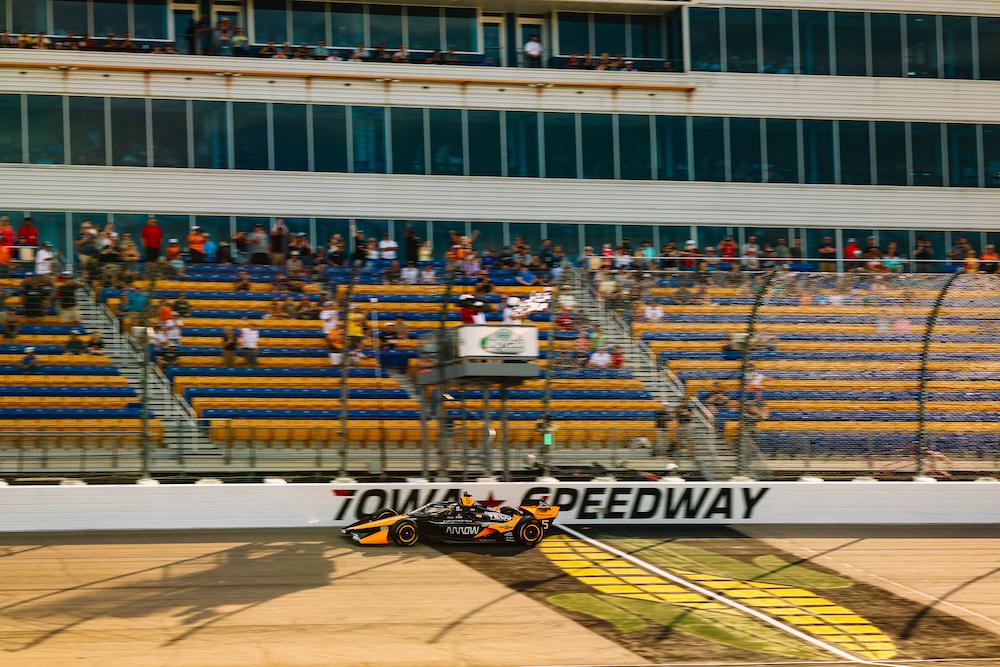
If an IndyCar drives past and nobody is in the grandstand to hear it, does it still make a sound? Joe Skibinski/IMS
Q: It’s no secret that IndyCar has little or no interest outside of basically four events: the 500, Road America, Long Beach and Mid-Ohio. The rest of the races have little to no attendance. People are clamoring for more ovals, but yet nobody shows up. I am all for doubling the Road America and Mid-Ohio rounds, where people show up in droves, to keep the schedule up in the mid-teens. How does the series survive without people in the stands?
Concerned in Colorado
MP: Can’t agree with the first statement, but there’s no arguing the greater point you make. I’ve run out of new ways to say that IndyCar cannot continue to race at places where people barely show up – not while it’s in a long-term rebuilding process – but it also faces the issue of not having enough new tracks to visit that would solve the low-attendance problem. Which makes your idea one to consider, provided the Road Americas and Mid-Ohios are confident they could draw two big crowds twice a year.
Q: Just finished watching Race 1 from Iowa. It was an entertaining race that showed the quality of racing the series provides. The crowd, however, was beyond disappointing. Embarrassing, actually. Not sure what the answer is, but ovals other than Indy just don’t sell for the series. Design a new car that can safely race on the existing road courses like Road Atlanta, Mosport, VIR, hopefully find a few more street circuits, and leave the ovals to Indy.
Michael Veretta, Ilderton, Ontario, Canada
MP: Milwaukee had an impressive crowd on its return last year. Nashville also did better than expected after a really long absence by IndyCar. Gateway (WWTR) has been good — with good being different from great — despite some shrinkage from the early years of its return.
I didn’t grow up with short ovals, but have come to love them almost more than road and street courses, which is my pre-IndyCar background. I’d welcome all the road courses you mention, but I’d never want to shed the non-Indy ovals.
Q: What an embarrassment, seeing all the thousands of racing fans disguised as empty seats both days at Iowa. How can you have 350,000 people at Indy and 350 people at Iowa? Maybe next year – if there is a race – they should give away all tickets for free and try to make up the lost revenue in parking and concessions. By the way, both races were great and very exciting.
Don, Grand Rapids
MP: Catch-22 here. If IndyCar needs to maintain its oval variety and stay between 16-18 races, Iowa Speedway is a great location to consider. If IndyCar (Penske Entertainment) needs to make money, well, free tickets isn’t the way to prop up a lack of demand unless someone believes it’s a marketing investment that might get Big Company X to spend a ton on becoming a Hy-Vee-level sponsor for 2027 and bring people back through immense promotions and attractions beyond the racing.
Q: Josef Newgarden fired everyone seemingly on his team except for his family after 2023. Not sure who was in his ear (or if he was just in his own head), but aside from a second 500 win, he seems like a miserable person. Does he think that alone was worth it? He’s perceived as a cheater, a liar, and bad guy – by me and many others. It’s also clear to me that at least one of his teammates feels like me. Is this ‘makeover’ all Josef’s doing? If so, like someone who represents himself in court, he has a fool for a client. If not, I’d submit he fired the wrong person/people.
Mike DeQuardo, Elkhart Lake
MP: Really hard to answer, Mike. Josef keeps his inner circle small, but two things stand out from the periphery: He’s got a crew on the No. 2 Chevy who are as ride-or-die as I’ve come across. From his crew chief to the rest of the mechanics to the engineers on the timing stand, that’s a tight-knit group right there. I know what it’s like to loathe an unpleasant driver from my time as an IndyCar crew member, and I don’t see that on the 2 car.
He’s gone from being a wide-open person, a friend to the paddock, with lots of free time for people, to someone who shows up on a mission to focus on his work, just with the members of his Penske tribe, and isn’t trying to be the wide-open guy of old. And I respect that. He’s been searching to find something that’s been missing since the end of 2019 when his last championship was won, and that’s involved some personnel changes that haven’t always been handled the right way, from what I’ve been told.
I’d love to meet the person who thinks they can tell Penske what to do, but yes, as the team’s most successful driver since he arrived there in 2017, you’d assume that comes with a level of influence that is real and significant.
He’s also been in a rolling kick to the crotch for almost two straight months starting with Pole Day on May 18. Even the second-place in Iowa Race 1 had a downside after being the fastest all day, and it happened again in Race 2, but came with a 10th-place result.
If he was winning, I’d bet there wouldn’t be much to talk about. But since he isn’t, and has come tantalizingly close and lost again – twice in under 24 hours in Iowa – it’s a story that continues to build in a negative direction. There would be something wrong with him is he wasn’t feeling miserable since May.
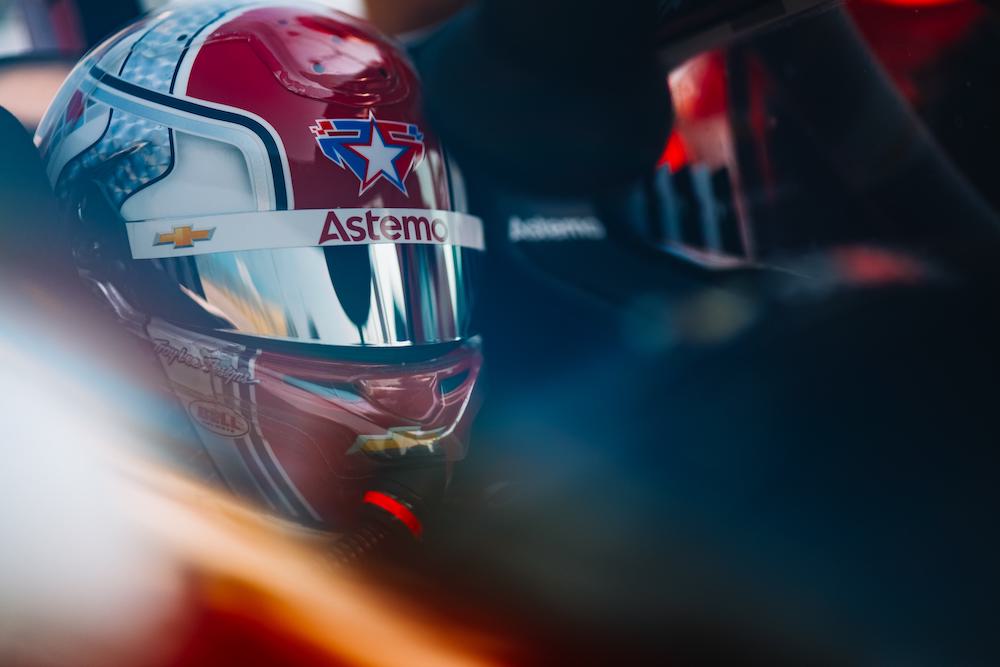
Newgarden’s public persona has changed over the years, but the fact that those closest to him on the team side are still all-in counts for plenty. Joe Skibinski/IMS
Q: I am very happy with FOX. But I have one complaint. It seems that FOX keeps engine sounds cranked up, covering the announcers’ voices. It makes it very hard to watch and listen.
I’m sure that I am alone. Please pass this along to your friends at FOX. FYI, after the Iowa race, I switched back and forth between the IMSA and the NASCAR Cup Series races. Neither network over amplified the car sounds and that made a better viewing experience
Last weekend’s races prove how great ovals are for IndyCar. We need more ovals, short or long, on the schedule. The shame is how empty the stands were on both days
Mike, Cincinnati
MP: Message inbound, FOX. Can you hear me now?
Q: Do media personalities, such as you, who are assigned to interview Newgarden (or try to) when he doesn’t win a race, automatically get an extra day off? If not, they should.
He’s gone from one of my favorites to my least.
Red
MP: ‘Media personalities’ is an interesting turn of phrase. ‘Dip**** who asks questions’ is more accurate.
Q: I empathize with the challenges that can emerge during a tough season, much like those experienced by Josef Newgarden and the Penske team this year. However, Josef’s reactions appear somewhat immature, especially given his track record of success, which would typically indicate a more composed response to setbacks.
In contrast, Scott Dixon exemplifies a more resilient attitude in similar circumstances, not storming off. While it’s understandable to feel disappointment and frustration, Josef’s inclination to withdraw and skip interviews, in my opinion, does not cast him in a favorable light. This behavior is not isolated; it seems to be becoming a recurring theme. What do you think?
Andrew Heid
MP: The wave of Josef questions right after Iowa wasn’t on my radar.
Some people care about how they are perceived. Josef appeared to fall into that category for the first 10 years of his IndyCar career, and then that appeared to become of less importance and he leaned heavily into a DGAF approach. He’s among the most self-aware and intelligent drivers I know, so he’d know his reactions of late would be received in a negative manner.
Said another way, if he cared about public perception, I’m sure he’d stay and wait for cameras and microphones to appear when whatever things go wrong to ensure his thoughts are shared and his view is understood. And since he isn’t waiting to be seen and heard most times, and since he’s extremely deliberate in his actions, I’d take what you see for what it is.
I’d also close by saying that if this was new-guy-at-Penske Josef, I don’t think he walks away a single time. That was also the before-Penske-owned-everything times when Roger was on a timing stand – not necessarily Josef’s, but there on someone’s Penske entry – at all the races and you don’t pull that kind of stuff with The Captain nearby. With Cindric gone and with Roger no longer on pit lane with his team, I can see how this has become a thing.
Can you imagine it becoming a thing at Ganassi, though? Or Arrow McLaren? Chip would apply ‘corrective behavior’ in an instant. You’d hear the shouting inside the transporter from a mile away, and it would never happen again. Same with Zak or TK. But different teams and different cultures here…
Q: What a contrast between Race 1 and Race 2 in Iowa. The way the yellows fell in Race 1 had little effect on the outcome. Not the same story in Race 2. Luck reared its ugly head in the form of yellow caution flags.
Teams have complained about cautions in IndyCar for a long time. More casual fans of the series become frustrated with how the races unfold. IndyCar never seems to have an acceptable solution. With IndyCar on the cusp of real ratings success, changes must be made. We have reached an inflection point in the series.
I’ve heard it said, “it’s only a problem if you have a solution”. Well, I would like to propose a solution. Pitting under yellow would not be permitted. All cars must pit under green to ensure all pit stops take place under similar conditions.
If a car cannot potentially complete the duration of a caution due to running out of fuel, then that car can pit for a ‘splash and go’ only and rejoin the field in the same position it occupied at the start of that yellow. However, to ensure that no team would attempt to do a ‘splash and go’ to get to the checkered flag without stopping again, that car would be required to pit within two laps of the green flag and take on a full load of fuel regardless of the remaining distance of the race… 275 laps or three laps, no matter.
While I may be missing a point or two, I believe we must start somewhere and begin coming up with some reasonable solutions. It is vital for the future of IndyCar to always do everything possible to maximize skill and minimize luck.
St. Louis Spencer
MP: I get your point, but name a sport where skill isn’t maximized and luck isn’t an influence in the outcome in every game or race? Closing the pits has been done before, and then you take away the dumpster divers who had poor qualifying runs from hitting pit lane early under caution, just as Scott Dixon did at Mid-Ohio, and bringing fun and interesting strategies into play among the majority who stick to the popular strategy.
Sometimes the pitcher loses control of the ball and hits the batter who goes on to score the winning run who wouldn’t be on base if it wasn’t for the pitcher’s bad luck. Sometimes the receiver can’t grasp the ball and it gets tipped straight to the safety who takes the interception to the house and scores the game-winning touchdown. Do we rewrite the rules to say a struck batter can’t score because of the ill-timed oops? Interceptions can’t be returned to the end zone if the receiver touched the ball? Just wondering how far we go to strip untimely or unwanted happenings from a game to ensure the outcome hasn’t been influenced by good or bad luck.
And if we prevent all pit stops that aren’t done under green to safeguard against chance and variety, do we also mandate what tire compounds teams can use and when as to prevent luck and variety there? Maybe we add two or three breaks during the race– almost at different stages – as well?
Bad things happen. It’s part of every single sporting event and it alters the score or finishing order in some capacity. Not sure how taking choices away and removing options and creativity improves the games.
Q: All three Andretti cars had a right front tire failure at the Iowa Speedway. Does Firestone provide the teams and the series with maximum static camber recommendations and minimum starting cold inflation pressure recommendations for each race? If the answer is yes, does the series check the camber settings in tech inspection, and does the series monitor tire inflation pressure via telemetry?
Dave, Ohio
MP: Recommendations, yes. ‘Recommendations’ being different from technical regulations. Firestone is extremely active in monitoring pressures and going straight to teams when it sees something that’s out of bounds.
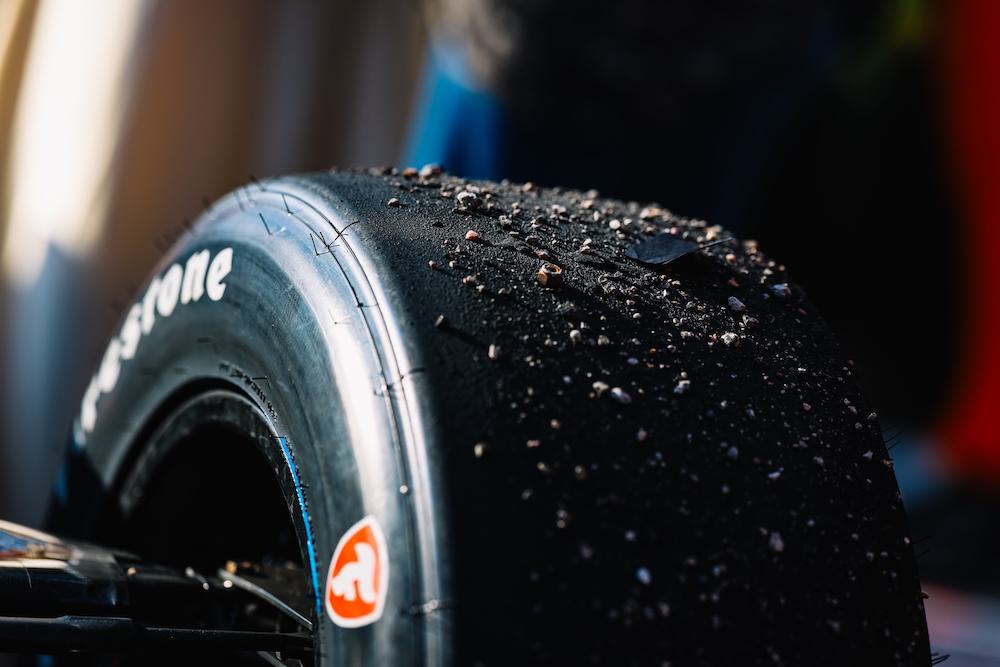
Firestone offers guidelines for what a tire might like on any given weekend, but teams are free to do their own thing. Joe Skibinski/IMS
Q: Great races in Iowa. I’m wondering how Honda is able to have such a fuel advantage over Chevy? Is it just a more efficient engine? Is there something specific that Chevy can try to match? Has it always been an advantage for Honda?
Rob, Tampa
MP: Chevy’s been known as the mid-range and top-end king with this motor formula and Honda’s been known as the bottom-end and fuel-mileage king. The two have been impossibly close in all those areas at times since 2012, traded those strengths and weaknesses, and snapped back as well. When it comes to mileage, it has been a Honda year.
Q: Two questions. First, how can it be that McLaren doesn’t have a reserve driver? They couldn’t bring one in? They did it before with Theo Pourchaire when Rossi broke his thumb in Toronto in 2024. Their sponsors cannot be happy about having the No.6 parked. [ED: This letter arrived before Arrow McLaren put Linus Lundqvist on standby ahead of Toronto]. Secondly, it appears that Toronto might be on the chopping block and Watkins Glen might be in the mix for coming back? Help me out here because I haven’t heard any chatter locally about this.
Rob, Rochester, NY
MP: Most IndyCar teams do not have reserve drivers, so that’s the norm. I’d think the sponsors of a car would be sympathetic to the plight of a young man who got hurt and are with a team that has the resources to hire a driver on short notice to represent them at a high level. Not like this is the first time a injured driver has been a question mark for the next race.
IndyCar president Doug Boles told us last week that he expects Toronto to return. Watkins has been a subject of speculation for no reason whatsoever. Being there during the aero kit era and seeing the max-downforce Indy cars fly through the corners at mind-bending speed was like a religious experience. But there are no plans for a return next year.
Q: I thought the double-header at Iowa Speedway was a great weekend for IndyCar. There was fantastic racing, lots of passing, strategy, stiff competition, and surprise endings (Chevy finally gets a win, Palou proves the Indy 500 was not a fluke).
The crowd for both races was very light, probably 25% capacity or less. Given the small crowds this year, is Iowa likely to remain a double-header in 2026?
The yellow flag laps were actually quite helpful at Iowa, because the sweepers wisely used the time to clean the track, opening the high lane for 10 or more laps. How can NASCAR run at Texas, WWTR and Iowa side-by-side all day long, but IndyCar, on the same tracks in the same conditions, only gets 10-15 clean laps before the marbles build up, making the high-lane treacherous? Clearly NASCAR tires shed rubber, so why aren’t they dealing with the same problem?
Here’s what we know: NASCAR has heavier cars, totally different aerodynamics, runs at slower speeds, with different loads, a different tire manufacturer with a different tire compound, different tire sizes, and responds favorably to PJ-1 and repaved tracks. So which of those differences is the primary factor that allows NASCAR to run the high-lane on these ovals, but IndyCar effectively cannot for more than 10 laps?
Kevin P., Los Angeles, CA
MP: NASCAR: Slow in corners, fast on straights. Tires aren’t grinding away on straights. IndyCar: Fast in corners, fast on straights. Tires are grinding in the corners. Marbles.
Q: Lundgaard got lapped at least twice and finished sixth. VeeKay got lapped probably four times and finished eighth. Abel was a moving chicane and got lapped who knows how many times and finished 15th. None of those guys had to earn any of those laps back, they just got handed them with the added benefit of pitting a lap later than the leaders. As a result, they finish ahead of cars that lapped them multiple times. What’s the explanation for IndyCar’s wave-around rule where lapped cars get their lap back and then also get to pit a lap after the leaders? At least NASCAR forces you to forgo your pit stop if you want the wave-around (besides the lucky dog).
Also, why doesn’t Firestone get any criticism for the tires this year? Zero tire deg at Iowa, and we’ve seen quite a few races this year where one tire has been absolutely useless to the point we may as well have only had one tire option. I get the hybrid adds a challenge, but it’s been more than a year since they’ve been implemented, not to mention all the testing that was done prior to that.
Brent
MP: The explanation is IndyCar allows everything you mentioned and NASCAR doesn’t? Hate to be Captain Obvious here (not really), but it’s what IndyCar wants to do, so they do it. It doesn’t base its rules on what another series does or doesn’t do.
Not sure how to respond to the Firestone comment because they’ve been heavily criticized when it’s been warranted. I know because I’ve listened to the complaints and written those stories, or included those complaints in race reports. And written positive things when positives have been spoken. I assume other reporters do the same.
Q: Congratulations to Miles Rowe on his historic victory at Iowa. IndyCar needs him to succeed, and hopefully he will get a ride next year.
Meanwhile here’s an idea that could keep oval racing including Iowa: The IndyCar Series should offer discount/travel packages to Indy 500 attendees at other IndyCar oval racing events. Some have shown a willingness to travel to other ovals based on the location in the Midwest like WWTR, Iowa and Milwaukee.
I think it can boost attendance at the other ovals by emailing an offer of cheaper tickets, and perhaps a travel packages to the other ovals that IndyCar is currently promoting. Years ago NHRA did something similar by offering discounts to their fan base and a deal with Motel 6.
If 10% of 500 attendees were intrigued by the deal, all our other ovals would look full and we wouldn’t have to wring our hands about the future of the series every time we go to a non-street/road course. To me I think this could help Iowa and perhaps add other ovals races like Michigan, Richmond, New Hampshire and Homestead.
Alistair, Springfield, MO
MP: Penske Travel, a new subsidiary of Penske Corporation. I quite like that idea, Alistair.
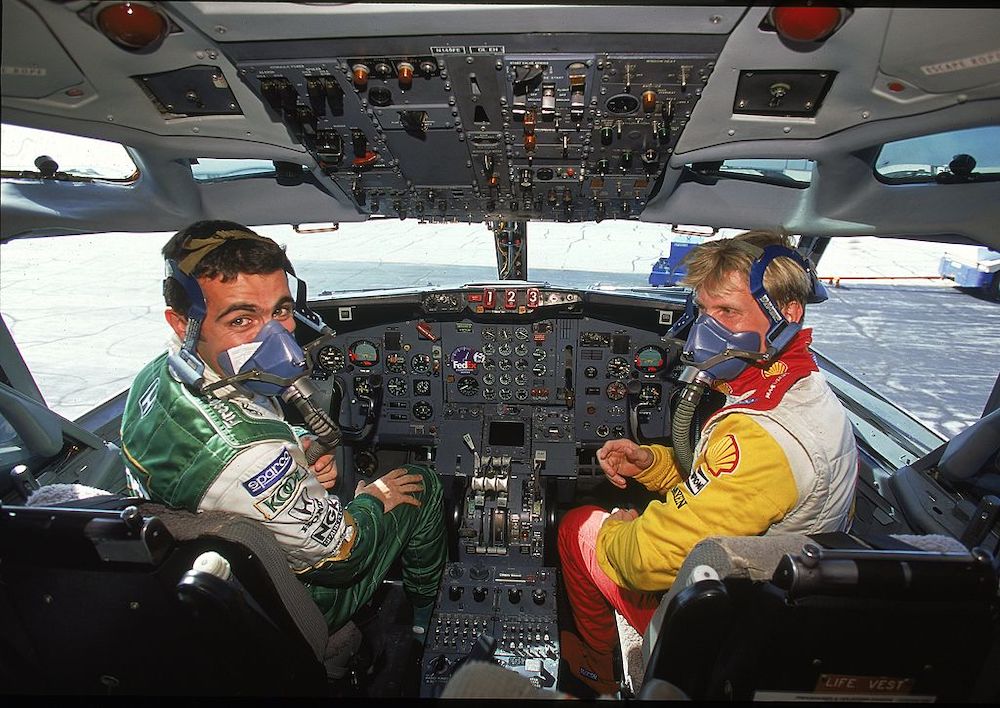
And if you want to make Penske Travel really interesting… Donald Miralle/Getty Images
Q: I’m sure you’ll get a lot of questions on this issue, but I wanted to ask from an international perspective.
I love watching an oval race, but it seems people aren’t turning up. My question is why, and how do we improve these numbers? Are ovals harder to get to than the road courses, or is it a lack of presence in games a hindrance?
The other thing that strikes me is the lack of action on the schedule for ovals. I know there aren’t many series that race on ovals, but why not consider the US Pro Series (maybe bring back the Road to Indy) or some off-track action? Crazy Carts have been a hit in the BTCC on Saturday; maybe IndyCar should do that. Expand to include more fan zones and Q&A sessions, among other things.
Now, since I’m UK-based, I’d have to invest a lot of money to travel and watch an IndyCar race in person. However, I’d get better value for my money at Long Beach (since it doubles up IMSA) or a trip to Road America. So I’m more likely to go to those than an oval. Look, I love watching oval racing, and it makes IndyCar stand out, but unless we change this, it won’t be long before we’re back to a late Champ Car series with the Indy 500.
Also, while I have you, what do we have to do to get the GTP class at Canadian Tire Motorsport Park? (And to add, brilliant to see Team Jota win with the Caddy).
Dan Mayhew
MP: Newton, Iowa, is 20-30 minutes from anywhere, so it involves a drive. But that’s also true for Laguna Seca, Mid-Ohio, Road America, Barber, WWTR to a lesser degree, and Nashville. Some of those tracks are packed while others are empty, so it’s not the driving or proximity to major cities.
Some of those places have IndyCar races hosted while it’s broiling hot, but if there’s trees or ready shade, folks show up. When I think of Iowa, it’s just hot, with no shade, with no sense of community like some of the others where folks camp and fellowship and make their own parties over the weekend. It’s a sit-in-the-stands-and-watch-racing event now that the big concerts are gone, and once upon a time, that was more than enough to attract an audience.
Your idea of packing each day with other stuff is a good one, but it’s a fairly sparse venue with limited options for those who like to have a bigger hand in creating their own experience at a motor race. Long Beach is the ultimate example of variety where you can sit in the stands, go down and see the cars, go inside the convention center and see and buy more cool stuff, eat at a range of restaurants, and never suffer from boredom.
At some of the others, you can bring all the fun and variety in your car or truck, put up a tent, and camp with like-minded folks around you. At an Iowa, or a Nashville, or a WWTR, there’s nothing there to entertain you beyond the cars, and no camping, and no shade. For those who want more than the sit-in-the-stands experience, which seems to be a growing segment, it does present a concern for the series.
Q: Is there any recommendation from IndyCar doctors to drivers about what position to hold when they are going to crash? I’m asking because when Nolan Siegel spun he moved his head forward a lot. That looked painful.
I don’t know if other drivers do the same. But wouldn’t it be better to keep your head resting in the back of the cockpit?
William Mazeo
MP: Haven’t heard of a series or its medical staff telling drivers how to position themselves in a crash, but yes, minimizing the distance between one’s helmet and the cushioning effect created by the head surround would seem like the right move every time in an impact.
Q: Will all the stakeholders in the Iowa races be able to save its place on the IndyCar schedule? It feels like no one is willing to compromise and fans end up being offered a product that is a poor value. The lack of 2025 attendance reflects the poor value being offered to fans. How many fans can be expected to pay several hundred dollars to attend 2026 race(s) given the following?
